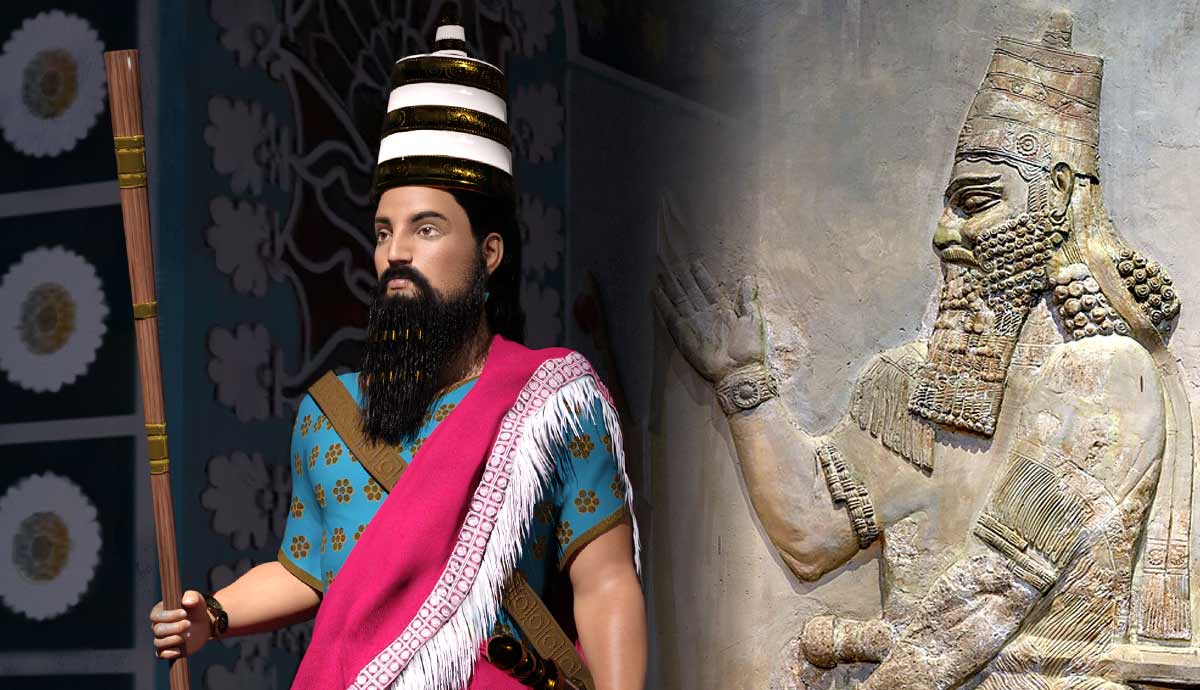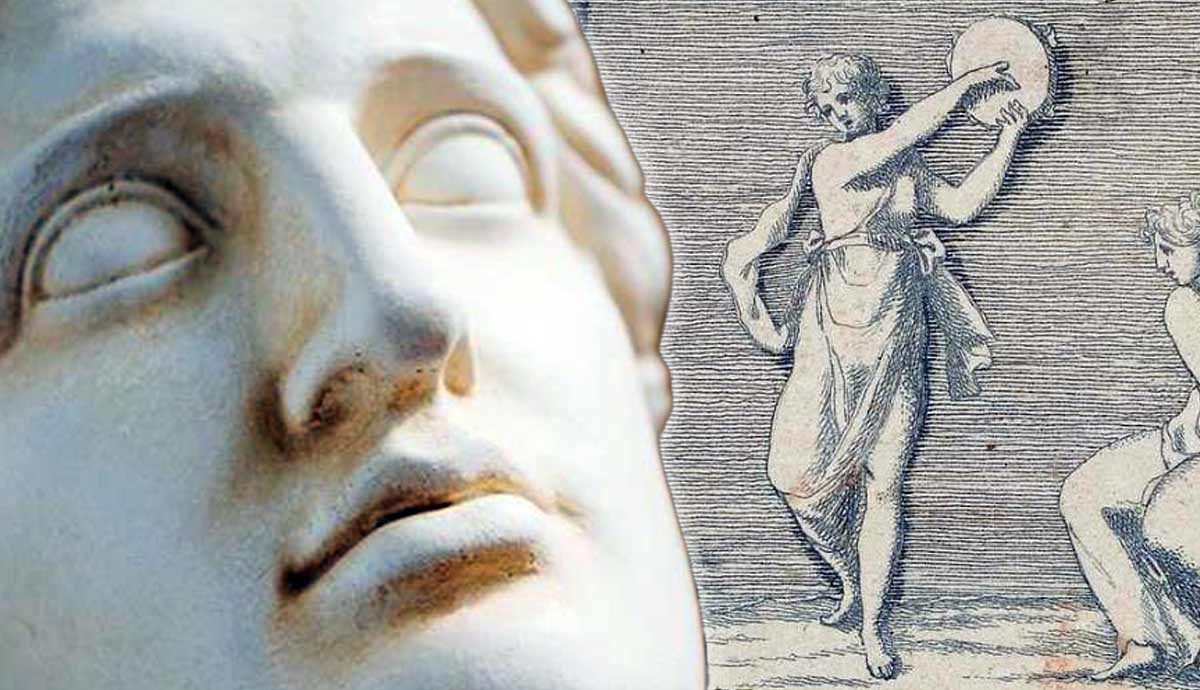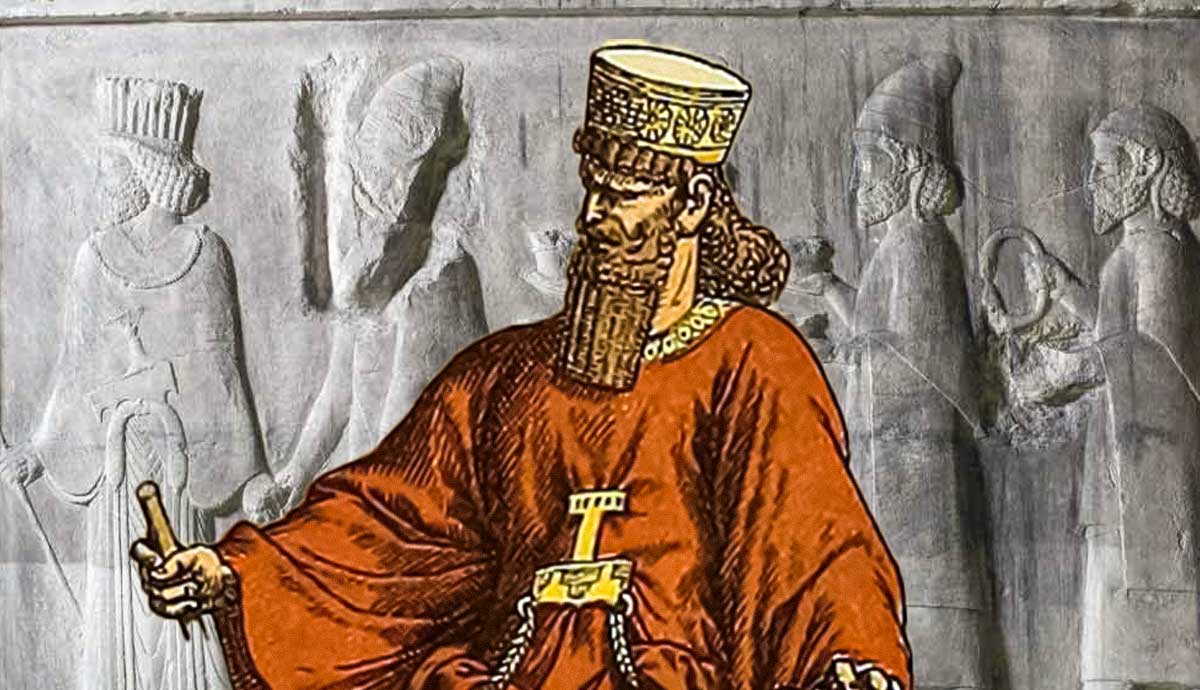
Sargon II ascended the Assyrian throne in 722 BCE and reigned until 705 BCE. Little is known about him before his contentious rise to power. Throughout his tenure as king, Sargon II entangled himself in political disputes, which often led to war, and in most cases, he emerged victorious. In addition to his wars with Urartu and Babylon, the construction of his city, Dur-Sharrukin, cemented his name among the most successful Assyrian kings. Sargon II seemed to have set himself up for a glorious and peaceful end to his reign, but tragedy struck on his final campaign.
Sargon II: Heir to the Throne?

Sargon II claimed that he was the son of Tiglath-Pileser III (ruled c. 745-727 BCE) and was potentially the brother of Shalmaneser V (ruled c. 727-722 BCE), but nothing is known of him before he became king. Many historians suggest that Sargon II was not intended as an heir and that he was a more distant relative of the ruling family. This is why he is considered the founder of a new dynasty, the Sargonid Dynasty, which would reign over the Neo-Assyrian Empire until its fall in 609 BCE.
Shalmaneser V was deposed in 722 BCE, and the details are unclear, as Sargon II rarely mentions his predecessor. In one inscription, he effectively stated that Shalmaneser V was a heretical despot who was cruel to the Assyrian people. Sargon II continued that it was the gods that ousted Shalmaneser V and made him king instead. It is assumed that he was killed either during or after the coup that placed Sargon II on the throne. The Babylonian Chronicles stated that Sargon II immediately succeeded Shalmaneser V and was between 40 and 50 years old upon his ascension.
Sargon II likely chose his regnal name to emulate the famous Sargon of Akkad or Sargon the Great, who was king from c. 2334 to c. 2279 BCE and had gained almost mythical status by the time of Sargon II. Fragmentary remains of the story of the legendary birth of Sargon were found in the library of Ashurbanipal, which substantiates the cultural significance of Sargon the Great during the later Neo-Assyrian Empire. Notably, Sargon the Great also usurped the throne and went on to become an infamous conqueror who ruled over Mesopotamia as well as areas of the Levant and Elam.
Initial Opposition

When he ascended the throne, Sargon II immediately removed some of Shalmaneser V’s unpopular policies, namely forced labor and high taxes. Although he admits in some inscriptions that these schemes had been in place before his predecessor’s reign, they contributed to making him unpopular. Nevertheless, many people within the Assyrian heartland were displeased with the new King Sargon II, and rebellions quickly erupted, resulting in many vassal states gaining independence.
For example, Babylon had been ruled by Assyria for eight years, but in 721 BCE, a Chaldean tribal leader named Merodach-Baladan invaded the city and reinstituted Babylonian autonomy. Merodach-Baladan then established an alliance with the Elamites, which strengthened Babylon’s position. Sargon II had to pacify the revolts within Assyria before he could turn his attention to the lands Assyria had just lost. In 720 BCE, the two kings fought, and the Babylonians emerged as the victors.

The Kingdom of Israel had fallen to Assyria at some point during the 720s BCE. Sargon II claimed he subjugated the area and named it Samerina. However, the Babylonian Chronicles and the Hebrew Bible both credit Shalmaneser V with this conquest. Either way, Sargon II found himself at war with an alliance of city-states in the Levant, including Damascus, which had rebelled against Assyrian rule. These provinces were presided over by local royalty, but the rulers were selected and supported by Assyria. The inhabitants of the cities rose up and murdered many Assyrian representatives while Sargon II was at war with Babylon.
Sargon II defeated the leader of the coalition, Yahu-Bihdi of Hama, and had him flayed alive in Ashur. A large number of people from the area, including thousands of Assyrians, were deported and resettled in new locations, which Sargon II described as an act of compassion. The Assyrians were probably those who had opposed his position as king.
Sargon II continued south and crushed another rebellion in Gaza. However, the kingdom was allowed to remain somewhat self-governing due to its tactical location near Egypt, which had bolstered their revolt.
Assyrian War With Urartu

By 718 BCE, Sargon II began to involve himself in disputes with Urartu. Urartu had once challenged Assyria’s dominance in northern Mesopotamia but had become less powerful. It still remained a thorn in Assyria’s side. The kingdom of Mannea, to the west of both Assyria and Urartu, boiled over into a civil war when the Assyrian vassal king was challenged by a noble who was associated with Urartu. Sargon’s troops quashed the rebellion, but the Mannean king passed away soon after. Sargon embroiled himself in the order of succession where, again, one heir was backed by Assyria and the other backed by Urartu.
Sargon II became increasingly concerned about Urartu’s activities and wanted to thwart an alliance between Urartu and the Anatolian Kingdom of Phrygia. With this in mind, Sargon II campaigned against small kingdoms who consorted with Phrygia. Carchemish, which had sided with Sargon II against earlier uprisings in the Levant, was now also colluding with Phrygia. In 717 BCE, Sargon II marched on the city, and after its defeat, he deported the entire population. In addition, so much loot was brought from Carchemish to Assyria that the Assyrians changed their economy from bronze-based to silver-based.

In 715 BCE, Urartu attempted to conquer the Cimmerians to their north but lost dramatically, which allowed the Cimmerians to pillage their way through Urartu. During the chaos, Rusa I, the King of Urartu, seized the lands of vassals loyal to Assyria, including the kingdom of Mannea. In retaliation, Sargon II reclaimed Mannea and crushed some smaller kingdoms that had rebelled in Media, which had only just been conquered by Assyria for conspiring with Urartu. The politics in the area shifted, as it was obvious that Rusa I and Sargon II would go to war. Kingdoms switched sides: some who were loyal to Urartu sent Sargon II tribute, and others who were allied with Assyria began to send Rusa I representatives.
The quickest journey from Assyria to Urartu was through a pass in the Taurus Mountains, but Rusa I had fortified the area in case of an Assyrian attack. Therefore, Sargon II marched his forces along a much longer route, which exhausted the soldiers by the time they made camp at Lake Urmia. When the Urartians arrived, Sargon II’s men would not fight until the Assyrian king and his inner circle of bodyguards rushed forward in a daring, if not suicidal, move. The Assyrian army was inspired by their brave king and followed suit.
Rusa I was defeated and retreated into the mountains, and Urartian troops were driven off west. On their return to Assyria, Sargon II and his army pillaged Musasir, one of Urartu’s most important cities and a religious center. The Assyrians remained victorious and carried off vast amounts of loot. Although Urartu retook Musasir the following year, the kingdom did not pose a threat to Assyria for the remainder of Sargon II’s reign.
Assyrian Conquest of Babylon

Sargon II spent the years from 714 to 710 BCE crushing minor rebellions throughout his empire, particularly within southern Anatolia, which was fairly stable after an uprising in Gurgum, a Neo-Hittite state, was crushed. In 712, the population of Ashdod in the Levant overthrew their Assyrian vassal state and attempted to create a coalition with neighboring Judah and Egypt, which both rejected the offer. Moreover, Sargon sacked Ashdod, forcing their king to flee to Egypt, but the pharaoh had him deported to Assyria.
The Assyrian king had been biding his time, waiting for the alliance between his two largest foes, Babylon and the Elamites, to deteriorate. By 710 BCE, Babylonian and Elamite relations were amicable, but their formal military pact had fallen apart. Sargon II seized the opportunity. He left his son Sennacherib in charge of building his new city, Dur-Sharrukin, as well as the empire’s everyday administration as he marched into Babylonia.

Sargon II began negotiations with smaller cities in Babylonia, some of which sided with the Assyrian king over the Babylonian Merodach-Baladan, such as the city of Sippar. After destroying many settlements on his journey, Sargon II approached Babylon from the southeast. Merodach-Baladan, seemingly with little support at home and a dwindling army, attempted to flee to Elam. However, while the Elamite king accepted Merodach-Baladan’s bribe, he would not let him enter the kingdom and did not send aid. This prompted Merodach-Baladan to escape to his home city of Dur-Yakin.
Meanwhile, Sargon II met little resistance in Babylon. Historians theorized that the priesthood at the time favored an Assyrian king over a Chaldean. Sargon II enjoyed some local ceremonies before heading back out to war to find Merodach-Baladan. The Assyrian army met that of Merodach-Baladan outside the walls of Dur-Yakin, which resulted in an Assyrian victory. Yet, Merodach-Baladan was able to escape back behind the city walls as the distracted Assyrians gathered up loot from the fallen soldiers. A siege began, and the Assyrians failed to take the city. Only through negotiations in 709 BCE did Dur-Yakin agree to surrender and take down their city walls if Merodach-Baladan would be left alive. Merodach-Baladan was then exiled to Elam with his family.
Dur-Sharrukin

Sargon II spent the next three years in Babylon and took part in a host of local rituals and religious events while Sennacherib effectively ruled Assyria. By 707 BCE, Sennacherib had sent word to his father that Dur-Sharrukin was complete and the king moved back the following year.
It is thought that the construction of the city began in 717 BCE. Its name translates to Fortress of Sargon. The settlement covered just under two kilometers and was arranged in an almost perfect square. Equally as impressive was the city’s outer wall, which was 12 meters high and 14 meters thick. Dur-Sharrukin’s crown jewel was its four-story ziggurat and the city was heavily decorated in images of the king. Sargon II’s prosperity grew when an Assyrian expedition to Cyprus resulted in him receiving tribute from multiple Cypriot kings. However, his success would not last for long.
Death and Legacy of Sargon II

In 705 BCE, Tabal in Anatolia rebelled against Assyria, and Sargon II decided to lead his troops into battle once more, despite having delegated this role in many recent campaigns. The fighting ended in tragedy for the Assyrians as Sargon II was killed in battle and his body lost amidst the disarray. Back in Assyria, the king’s death was viewed as an immensely bad omen, particularly because he was seemingly the only Assyrian king who had died in battle.
Sennacherib had the Assyrian capital quickly relocated from Dur-Sharrukin to Nineveh. The impact of Sargon II’s military disaster manifested during his son’s reign. Sennacherib dissociated himself from his father. His actions during his reign displayed that he was skeptical of Sargon’s relationship with Babylon, which his father had preserved and respected due to its religious importance. When Merodach-Baladan rose again under Sennacherib, the Assyrian ruler showed no mercy to the city and razed it to the ground, which was thought to be a major factor in his disastrous death.
Mainly due to the efforts of Sennacherib, little evidence remained of Sargon II’s reign. Yet his view of his father appears to have been a complex one. Upon Sargon II’s death, his son renovated a temple of Nergal, the god of the underworld, perhaps an attempt at easing Sargon’s spirit. The Assyrians believed the unburied would continue as restless ghosts. Similarly, Sennacherib sent Assyrian troops to Tabal to kill their leader in 704 BCE, but no source has been found that remarked on its results.
The remains of Dur-Sharrukin were found unintentionally in 1843, yet Sargon II was not confirmed as an individual king until the 1860s. However, since then, historians have dubbed him one of the most influential Assyrian kings due to his monumental expansion of Assyrian territories and his success as a military strategist until his final campaign.










